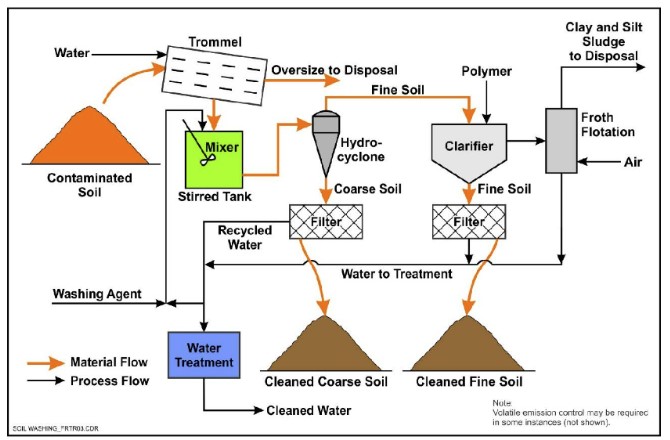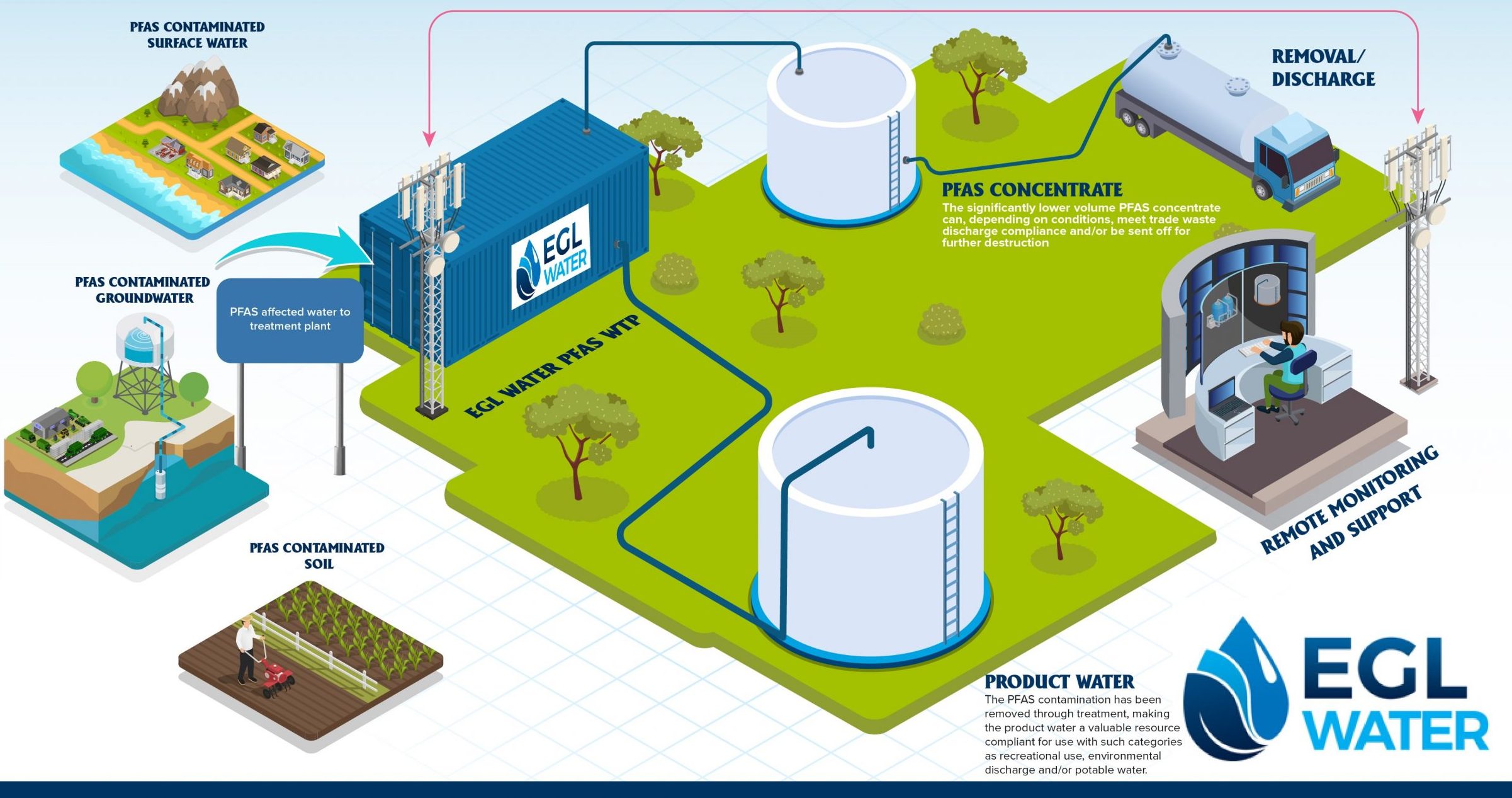The Complete Guide to PFAS Treatment for Water Contamination
Your Overview to PFAS Therapy Technologies and Conveniences
The frequency of PFAS contamination in water resources necessitates a comprehensive understanding of offered therapy modern technologies. Each technology not just targets certain PFAS substances but likewise plays an important duty in boosting general water high quality and shielding ecological stability.
Recognizing PFAS Contamination
Comprehending PFAS contamination is essential for resolving its prevalent effect on environmental and human health and wellness (m270 pfas treatment). Per- and polyfluoroalkyl compounds (PFAS) are a group of artificial chemicals widely used in various commercial and customer products as a result of their water- and grease-resistant buildings. Frequently located in firefighting foams, non-stick kitchenware, and water-repellent textiles, PFAS have actually entered the setting with production processes, wastewater discharges, and leaching from garbage dumps
Once released, these substances continue the atmosphere, causing widespread contamination of soil and water sources. Their unique chemical structure, characterized by solid carbon-fluorine bonds, renders them immune to degradation, resulting in a phenomenon recognized as "permanently chemicals." PFAS can gather in the human body and the food chain, potentially causing damaging wellness impacts, including immune system interruption, developmental concerns, and a raised threat of certain cancers.
Governing agencies and health companies are increasingly acknowledging the relevance of PFAS contamination, prompting efforts to keep track of, evaluate, and reduce its results. Recognizing the pathways of PFAS contamination is vital for notifying public policy and developing efficient methods to safeguard both ecological and human wellness.
Overview of Therapy Technologies
Numerous treatment modern technologies have been developed to address the difficulties postured by PFAS contamination in water and dirt. These innovations can be extensively identified into numerous groups, each with its distinct mechanisms and efficiency in removing PFAS substances.
One famous method is ion exchange, which utilizes resin products to capture and remove PFAS from infected water. This method is specifically effective for short-chain PFAS and can achieve significant reductions in focus degrees. One more technology, progressed oxidation processes (AOPs), employs solid oxidants and ultraviolet light to damage down PFAS into much less harmful compounds. AOPs are suitable for dealing with a vast array of PFAS substances however may need careful optimization to take full advantage of efficacy.

Turned On Carbon Filtering
Turned on carbon filtering is an extensively used method for the elimination of PFAS from infected water, known for its capability to adsorb a broad array of organic compounds. This modern technology employs turned on carbon, a very permeable product click here for info with a considerable surface, which helps with the binding of PFAS particles via physical adsorption. The efficiency of turned on carbon in getting rid of PFAS is affected by numerous variables, including the sort of carbon used, the contact time, and the focus of PFAS in the water.
One of the advantages of turned on carbon filtering is its flexibility; it can be applied in various arrangements, such as granular triggered carbon (GAC) systems or powdered triggered carbon (SPECIAL-INTEREST GROUP) systems. GAC systems straight from the source are generally used in larger-scale applications, while political action committee can be used in smaller or short-term arrangements. Additionally, the modern technology is relatively very easy to run and keep, making it accessible for many water therapy centers.

Ion Exchange Equipment
Ion exchange systems stand for another reliable technique for the elimination of PFAS from polluted water, matching approaches like triggered carbon filtration. These systems run on the concept of exchanging ions in the water with ions hung on a resin material. Ion exchange resins can be especially developed to this link target the negatively billed PFAS compounds, efficiently catching them and permitting cleaner water to go through.
Among the primary benefits of ion exchange systems is their capability to get rid of a vast range of PFAS, consisting of both long-chain and short-chain variants. This convenience makes them appropriate for different applications, ranging from local water therapy to commercial processes. Additionally, ion exchange systems can frequently attain lower discovery restrictions for PFAS compared to a few other treatment methods, thus enhancing water quality.
Nonetheless, it is important to keep track of and handle the regeneration of ion exchange media, as the efficiency can decrease gradually because of saturation. Correct maintenance and substitute of the material are vital for maintaining the system's effectiveness. In general, ion exchange systems offer a dependable and efficient option for PFAS elimination, contributing considerably to safe drinking water criteria and environmental defense.
Advanced Oxidation Processes
Advanced Oxidation Processes (AOPs) use powerful oxidants to efficiently degrade PFAS substances in contaminated water. These cutting-edge treatment methods generate extremely reactive species, such as hydroxyl radicals, that can damage down complicated PFAS particles into much less unsafe by-products. m270 pfas treatment. AOPs commonly use combinations of ultraviolet (UV) light, ozone, hydrogen peroxide, or Fenton's reagent, enhancing the oxidation potential and boosting deterioration effectiveness
The primary advantage of AOPs lies in their capacity to target a broad variety of PFAS substances, consisting of both long-chain and short-chain variants. This flexibility is important, as PFAS contamination typically involves blends of different compounds with varying chemical frameworks. AOPs can be incorporated into existing water treatment systems, making them a functional service for numerous communities and sectors.
Nevertheless, the implementation of AOPs can be resource-intensive, calling for careful consideration of functional prices and energy intake. Additionally, while AOPs work in damaging down PFAS, they may not entirely get rid of all by-products, necessitating further therapy actions - m270 pfas treatment. Overall, AOPs stand for an encouraging method for resolving PFAS contamination, contributing to cleaner water sources and improved public wellness defense

Final Thought
By choosing the ideal innovation, areas can improve water quality, shield public health, and alleviate the ecological threats associated with PFAS exposure. Continued study and application of these methods are important for effective monitoring of PFAS contamination in influenced locations.